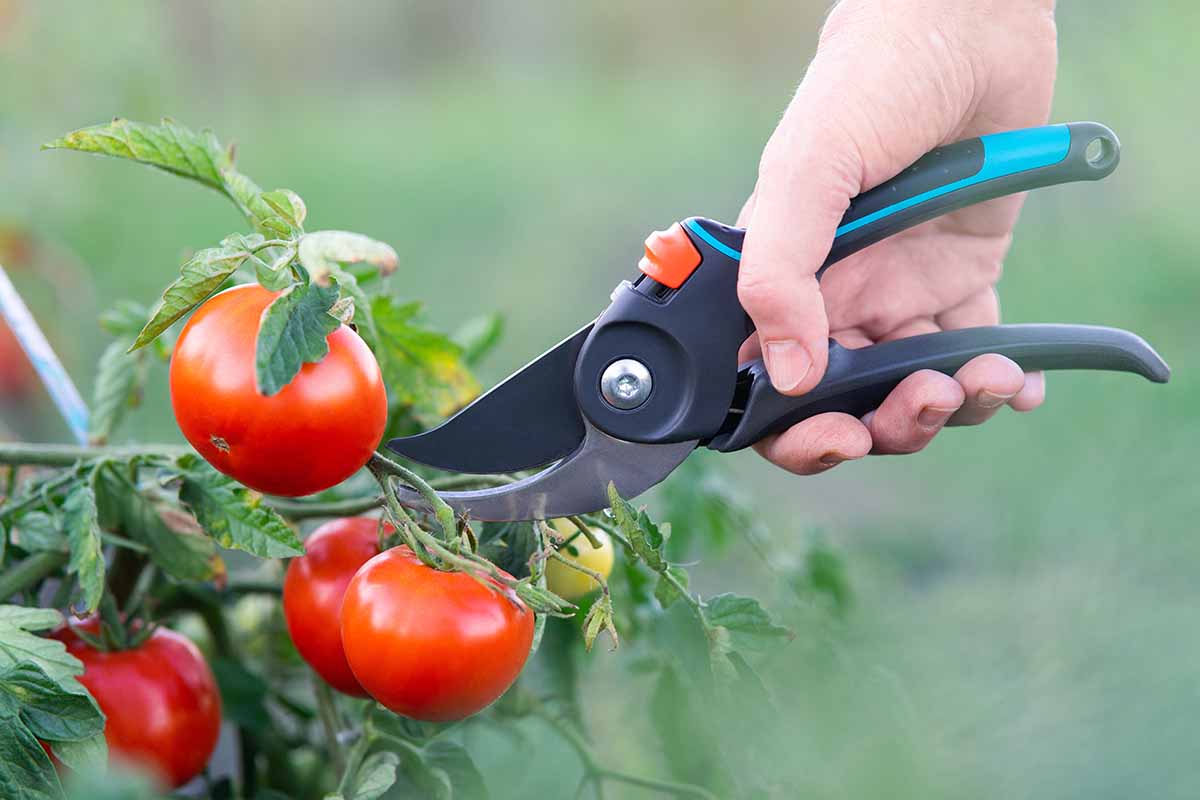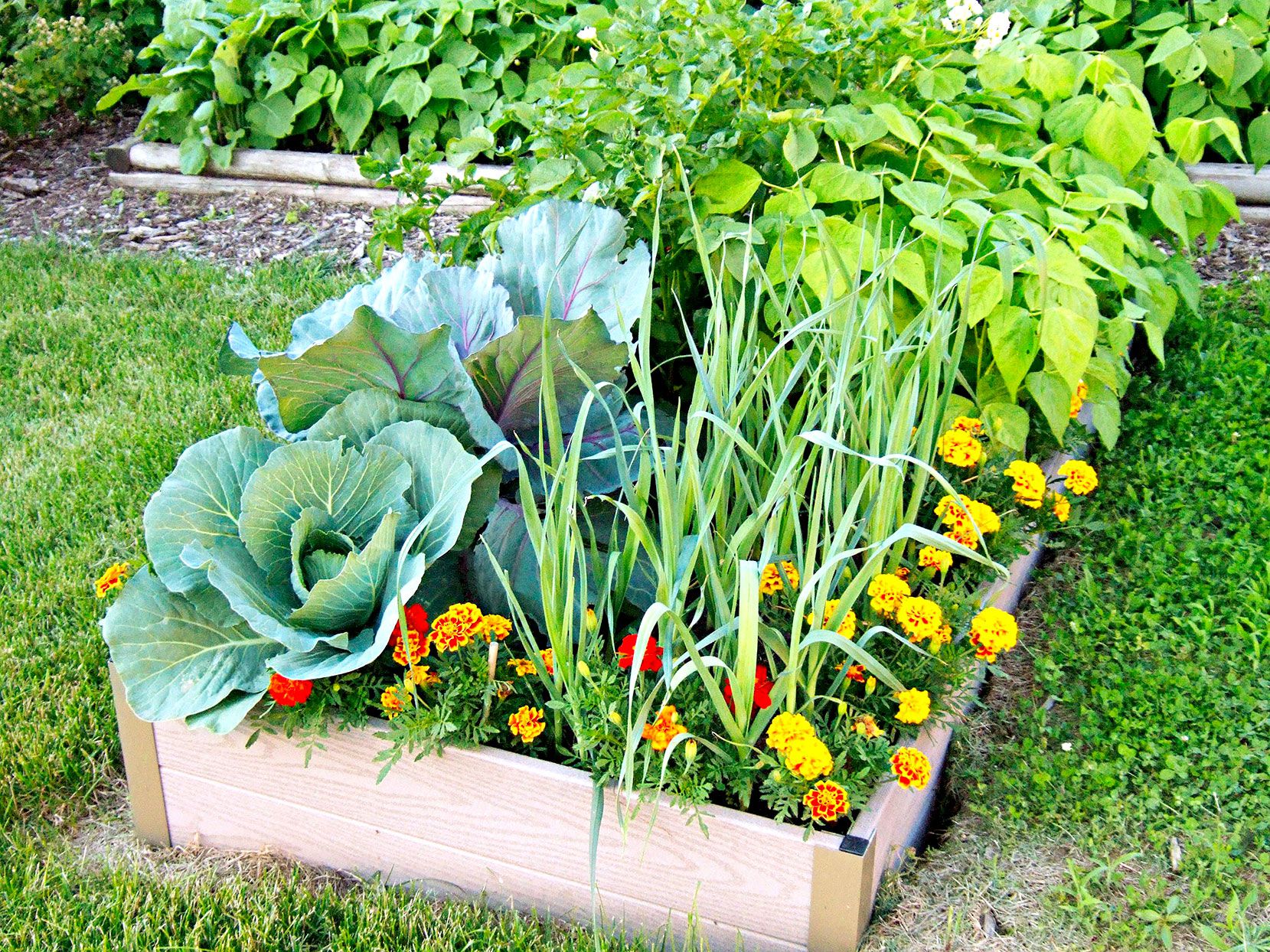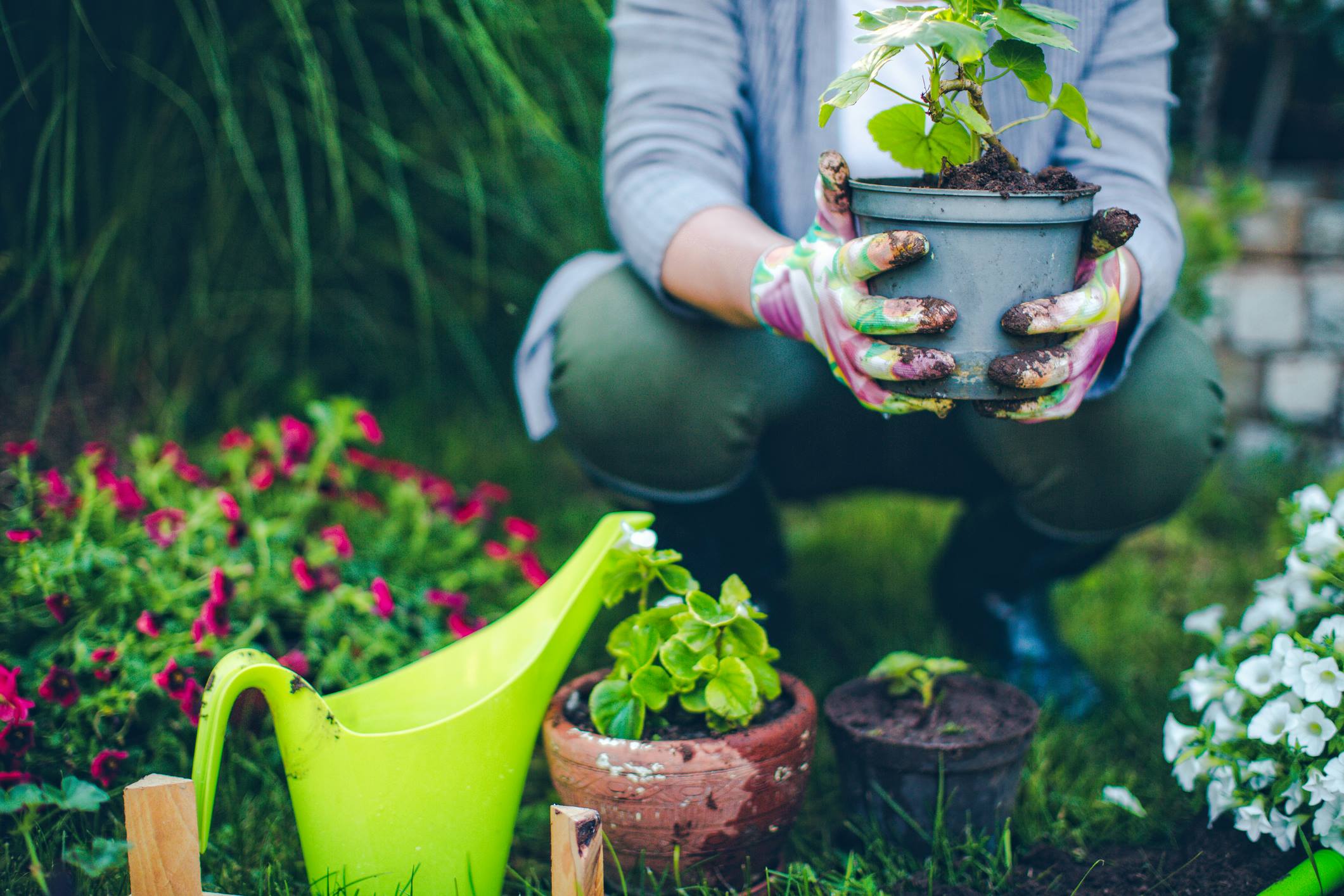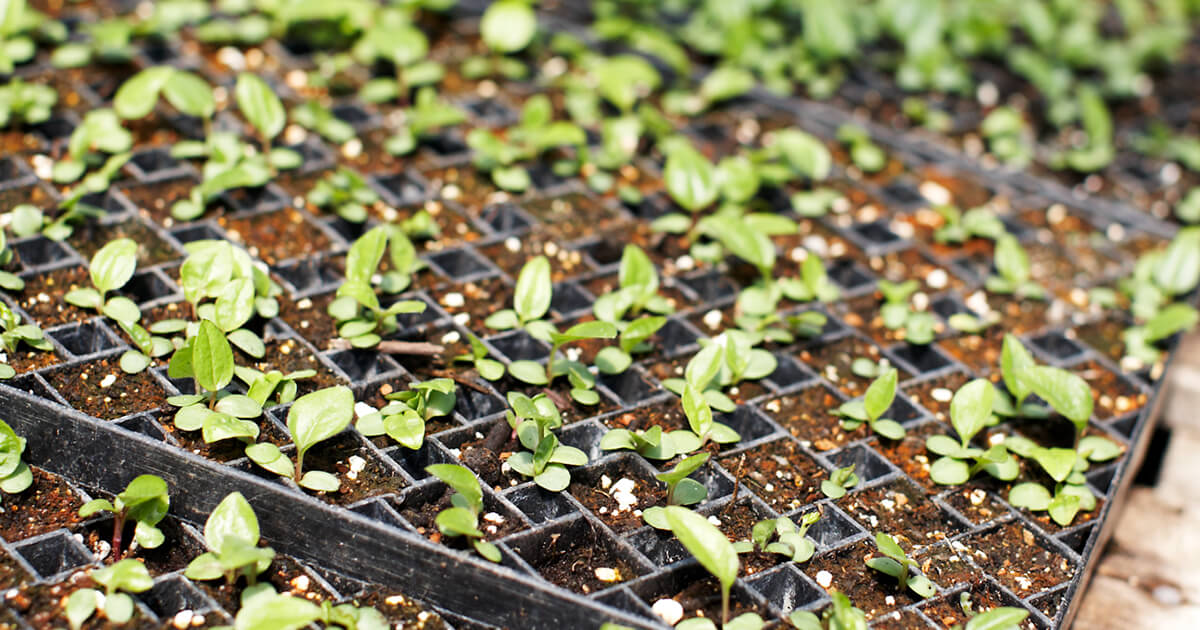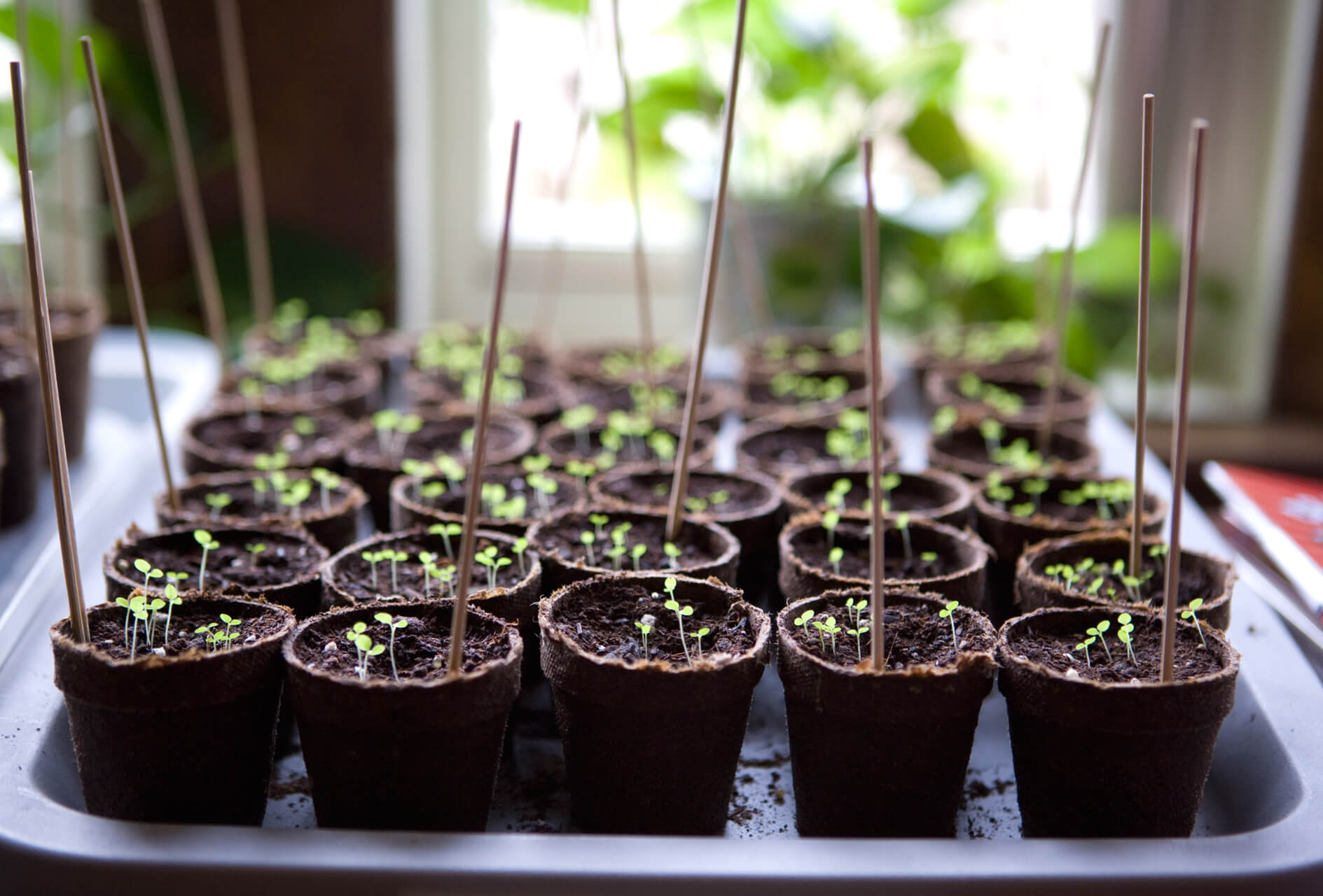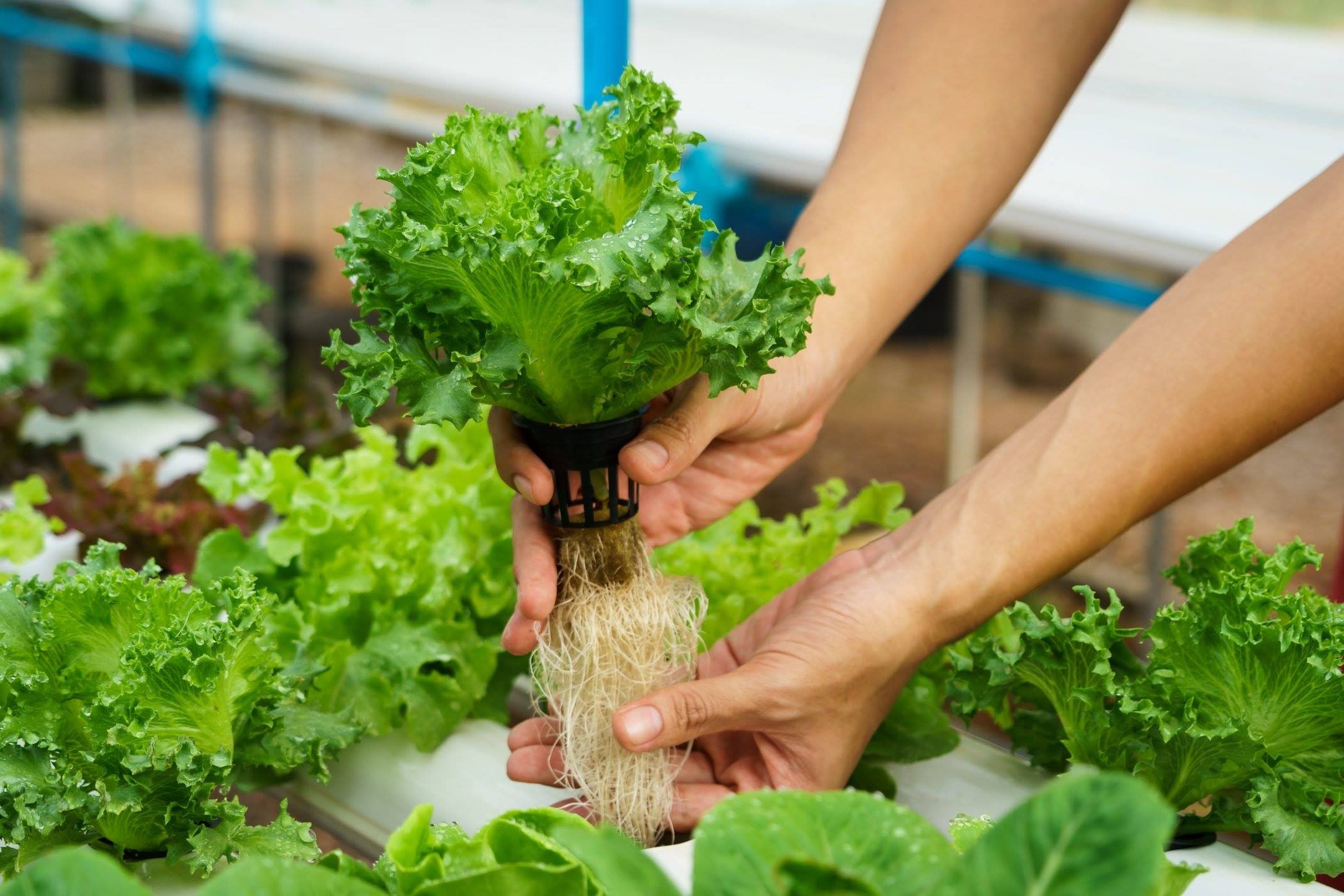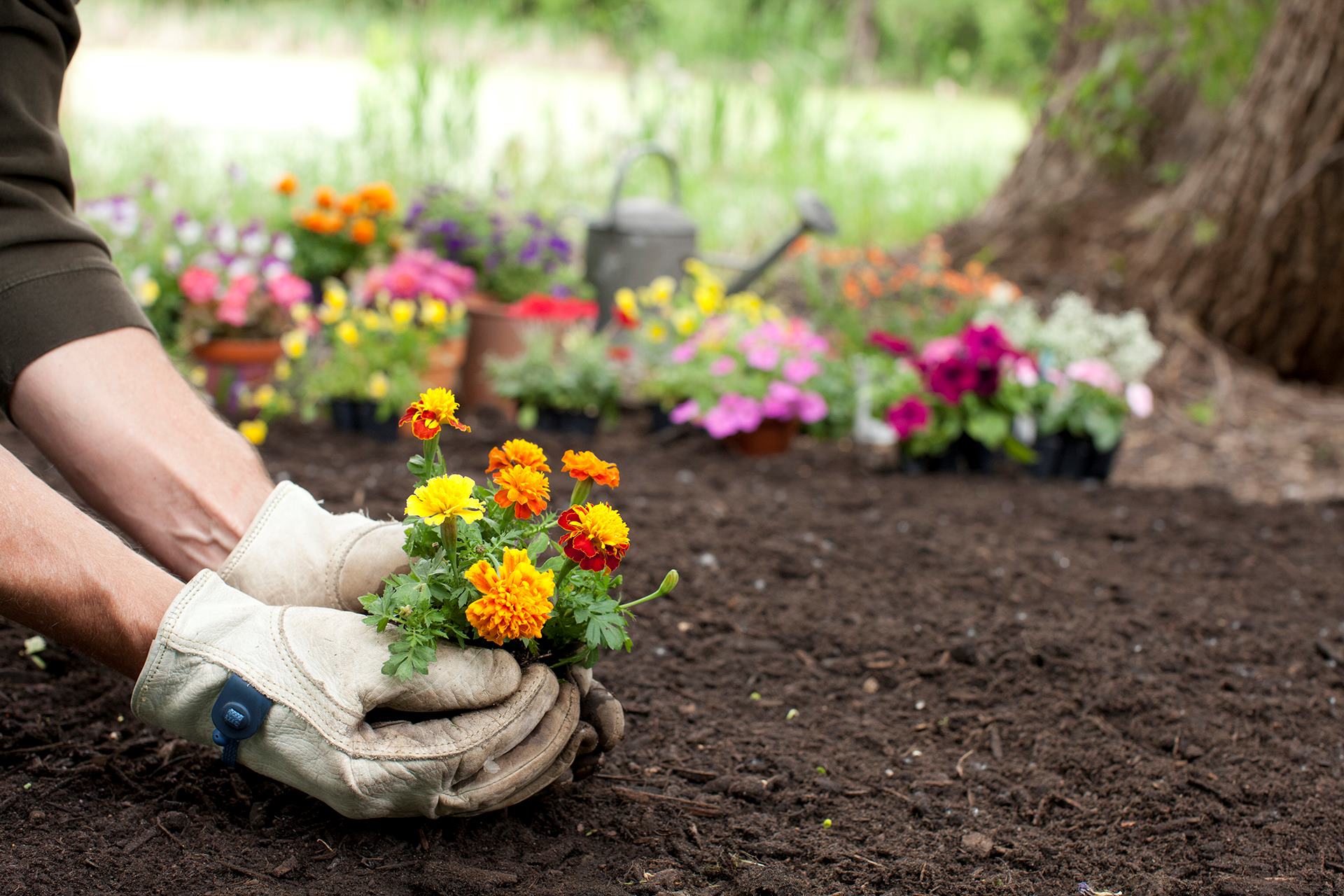Home>Gardening Techniques>Seasonal Gardening>When Do Weeds Start Growing


Seasonal Gardening
When Do Weeds Start Growing
Modified: January 22, 2024
Learn about the seasonal gardening tips for controlling weeds and find out when these pesky plants start growing.
(Many of the links in this article redirect to a specific reviewed product. Your purchase of these products through affiliate links helps to generate commission for Chicagolandgardening.com, at no extra cost. Learn more)
Table of Contents
- Introduction
- Factors Affecting Weed Growth
- Temperature and Seasonal Variation
- Soil Moisture and Nutrient Availability
- Light and Photoperiod
- Weeds in Different Regions
- Early Signs of Weed Emergence
- Weed Growth throughout the Year
- Controlling Weed Growth
- Cultural Control Methods
- Mechanical Control Methods
- Chemical Control Methods
- Conclusion
Introduction
Welcome to the world of seasonal gardening and the battle against weeds! As any seasoned gardener knows, weeds can quickly take over a once pristine garden and wreak havoc on your carefully cultivated plants. Understanding when and why weeds start growing is crucial for effectively managing them and maintaining the beauty and health of your garden.
Weeds are opportunistic plants that thrive in environments where they can outcompete other plants for resources such as sunlight, water, and nutrients. They have evolved various strategies to ensure their survival and reproduction, such as producing copious amounts of seeds or spreading vigorously through underground rhizomes.
In this comprehensive guide, we will explore the factors that influence weed growth, how it varies with temperature and season, and the early signs of weed emergence. We will also delve into methods for controlling weed growth, including cultural, mechanical, and chemical control methods.
Understanding the factors that influence weed growth is essential for effective weed management. Temperature and seasonal variation play a crucial role in determining when weeds start growing. Some weeds are more active during specific seasons, while others can thrive in a wide range of temperatures.
Soil moisture and nutrient availability also affect weed growth. Weeds are often more resilient than cultivated plants and can adapt to different moisture conditions. Understanding the relationship between soil moisture and weed growth can help you devise effective watering strategies for your garden.
Light and photoperiod, or the amount of sunlight received during the day, are additional factors that influence weed growth. Some weeds are more adapted to shady conditions, while others thrive in full sun. By understanding the light requirements of different weed species, you can strategically plan your garden’s layout to minimize weed growth.
It is also important to recognize that weed growth can vary in different regions and climates. Weeds that are common in one area may be less prevalent or completely absent in another. By understanding the local weed flora, you can prepare and implement appropriate weed control measures.
Early detection of weed emergence is crucial for effective management. By recognizing the early signs of weeds, such as seedlings or emerging shoots, you can implement control measures before they have a chance to establish and spread. Regular monitoring and prompt action are key to preventing weed infestations.
In the following sections, we will explore the different methods of controlling weed growth, including cultural, mechanical, and chemical control methods. By employing a combination of these approaches, you can effectively manage weeds and maintain a healthy and vibrant garden.
So, get ready to dive into the world of seasonal gardening and arm yourself with the knowledge to combat weeds effectively. Let’s explore the fascinating world of weed growth and control methods, and transform your garden into a weed-free haven of beauty and productivity.
Factors Affecting Weed Growth
Weed growth is influenced by several factors, including temperature, soil moisture, nutrient availability, light, and photoperiod. Understanding how these factors interact can help you better manage weed growth and maintain a healthy garden.
Temperature and seasonal variation play a significant role in determining when weeds start growing. Weeds, like all plants, have preferred temperature ranges for optimal growth. Some may thrive in cooler temperatures, while others are more active in warmer weather. Understanding the temperature requirements of common weed species in your region can help you plan your gardening activities accordingly.
Soil moisture and nutrient availability are crucial factors that affect weed growth. Weeds often have a competitive advantage over cultivated plants when it comes to accessing vital resources. They are adapted to thrive in varying moisture conditions and can quickly exploit any available nutrients. Managing soil moisture and optimizing nutrient levels through proper fertilization can help suppress weed growth and promote healthy plant development.
Another factor that influences weed growth is light and photoperiod. Different weed species have varying light requirements, with some thriving in shady areas, while others prefer full sun. By understanding the light preferences of weeds, you can strategically plan your garden layout to minimize weed colonization.
It’s important to note that different regions may have specific weed floras. Weeds that are common in one area may be less prevalent or absent in another. Local environmental conditions and climate play a significant role in determining which weed species dominate a particular area. Understanding the predominant weeds in your region can guide your weed control efforts.
Early detection of weed emergence is crucial for effective management. Keep an eye out for early signs of weed growth, such as seedlings or emerging shoots. Prompt action, such as hand-pulling or spot treatment with herbicides, can help prevent weed establishment and spreading.
By understanding the factors that affect weed growth, you can implement appropriate weed control strategies. A combination of cultural, mechanical, and chemical control methods can help you effectively manage weed growth and maintain a weed-free garden. In the following sections, we will explore these control methods in more detail, providing you with the tools to combat weeds throughout the gardening season.
Temperature and Seasonal Variation
Temperature and seasonal variation play a crucial role in weed growth patterns. Weeds, like most plants, have specific temperature requirements for optimal germination, growth, and reproduction. Understanding the relationship between temperature and weed growth can help you plan your gardening activities and implement effective weed control strategies.
Different weed species have varying temperature preferences and adaptability. Some weeds prefer cooler temperatures, while others thrive in warmer conditions. Understanding the temperature range at which common weed species in your area are most active can help you anticipate when weed growth will be most prevalent.
In early spring, as temperatures begin to rise, many weed species start germinating. These early-emerging weeds take advantage of the moist, nutrient-rich soil and the increasing sunlight. They compete with cultivated plants for resources, which can hinder the growth and development of desired plants. Monitoring and addressing early weed growth can prevent infestations from becoming established and difficult to control.
In the summer months, when temperatures reach their peak, certain weed species are in their prime growing phase. These aggressive weeds can spread rapidly and outcompete your garden plants for resources. Regular monitoring and proactive weed control measures are essential during this time to prevent the weeds from overpowering your garden.
As temperatures begin to cool in the fall, some weed species may undergo a growth slowdown or start producing seed heads. This is a critical time to prevent weed seed dispersal and minimize the weed seed bank in your garden. Proper weed control procedures, such as removing mature weeds and preventing seed scattering, can help reduce future weed problems.
During the winter months, weed growth generally slows down or becomes dormant, depending on your region’s climate. However, some weed species are resilient and can survive and even thrive in cold conditions. It’s important to note that weeds that go unnoticed in the dormant season can quickly become problematic once the temperatures rise again. Monitoring and addressing weed growth even during the winter months can give you a head start in preventing weed infestations when spring arrives.
By understanding the temperature and seasonal patterns that influence weed growth, you can take proactive measures to prevent weed problems before they become overwhelming. Regular monitoring, timely weed control measures, and maintaining optimal growing conditions for desired plants can help you maintain a beautiful and weed-free garden throughout the year.
Soil Moisture and Nutrient Availability
Soil moisture and nutrient availability are critical factors that influence weed growth. Weeds have a remarkable ability to adapt to different soil conditions, allowing them to outcompete desired plants for vital resources. Understanding the relationship between soil moisture, nutrient availability, and weed growth can help you manage weeds effectively and promote the health of your garden plants.
Weeds have evolved to thrive in a wide range of moisture conditions. Some weed species are adapted to dry, arid environments, while others prefer moist or even waterlogged soil. By understanding the moisture requirements of common weed species in your area, you can adjust your watering practices to minimize weed growth. Proper irrigation techniques, such as deep watering that encourages the development of deep plant roots, can discourage shallow-rooted weeds.
Similarly, weeds are known for their ability to exploit available nutrients in the soil. They can quickly colonize nutrient-rich areas, leaving little for desired plants to thrive. Proper fertilization techniques, including soil testing and targeted nutrient application, can help maintain optimal nutrient levels for your garden plants while suppressing weed growth. Mulching the soil surface with organic materials can also help suppress weed emergence by blocking sunlight and reducing soil moisture evaporation.
In addition to nutrient consumption, weeds often disrupt nutrient cycling in the soil. Some weed species release chemicals that suppress beneficial soil microorganisms, leading to nutrient imbalances and reduced plant health. Regular soil testing and amending the soil with organic matter can help restore nutrient balance and create an environment less favorable for weed establishment.
Weeds have adapted various strategies to compete efficiently for soil moisture and nutrients, including extensive root systems and rapid growth rates. They can extract moisture and nutrients more efficiently than desired plants, making them highly competitive. Therefore, it is essential to stay on top of weed control and implement cultural practices that promote healthy plant growth.
Proper irrigation scheduling, avoiding overwatering or underwatering, can minimize weed growth while providing optimal moisture for your garden plants. Furthermore, practicing good weed management techniques, such as regular weeding and prompt removal of weeds before they can spread, can help limit competition for soil moisture and nutrients.
By understanding the relationship between soil moisture, nutrient availability, and weed growth, you can implement targeted strategies to manage weeds effectively. Regular monitoring, proper irrigation practices, soil testing, and providing optimal growing conditions for your desired plants will help you maintain a healthy garden and reduce weed infestations.
Light and Photoperiod
Light and photoperiod, or the amount of sunlight received during the day, play a significant role in weed growth and development. Different weed species have varying light requirements, and understanding their preferences can help you implement effective weed control strategies.
Weeds, like all plants, require sunlight for photosynthesis, the process by which they convert light energy into chemical energy to fuel their growth. Some weed species thrive in full sun, while others are more adapted to shady conditions. By understanding the light requirements of common weed species in your area, you can strategically plan your garden layout to minimize weed colonization.
In areas of your garden that receive full sunlight, you may notice an abundance of light-loving weeds. These weeds compete with your desired plants for sunlight, water, and nutrients. Regular weeding and implementing appropriate spacing between plants can help prevent weeds from overshadowing and inhibiting the growth of your garden plants.
In contrast, shady areas of your garden may be more prone to weed invasion by shade-adapted weed species. These weeds are adapted to lower light levels and can outcompete your desired plants in these areas. Strategies such as selective pruning to increase light penetration and choosing shade-tolerant plant varieties can help minimize weed growth in shady spots.
Photoperiod, the duration of daylight and darkness in a 24-hour period, also influences weed growth and development. Some weed species are sensitive to changes in day length and exhibit different growth patterns depending on the season. They may grow more vigorously during long daylight periods and slow down during shorter daylight periods.
Understanding the photoperiod preference of different weed species can help predict their growth and plan weed control efforts accordingly. For example, if you know that a particular weed species is more active during long daylight periods in the summer months, you can focus on preventative measures, such as regular weeding and mulching, during this time to prevent the weed seeds from germinating and establishing in your garden.
Proper garden design, taking into account light availability and understanding the photoperiod preferences of common weed species, can help you create an environment that is less favorable for weed growth. By providing optimal light conditions for your desired plants and implementing regular weeding practices, you can minimize the impact of weeds on your garden’s overall health and productivity.
Weeds in Different Regions
Weeds vary in their distribution and prevalence across different regions and climates. Environmental conditions, such as temperature, rainfall, soil composition, and human activities, play a significant role in determining the weed species that dominate a particular area. Understanding the weeds common in your region is essential for effective weed management.
Each region has its own unique weed flora, consisting of both native and introduced species. Native weeds are plants that have evolved in a specific region and may have ecological roles within the local ecosystem. However, not all native weeds are desirable in a garden setting, as they can still compete with cultivated plants for resources.
Introduced or invasive weeds, on the other hand, are non-native plants that have been introduced to a region and can quickly spread and outcompete native plants. These weeds often lack natural predators or diseases that regulate their growth, allowing them to become highly invasive and problematic. Invasive weeds can disrupt natural ecosystems, crowd out native species, and impact biodiversity.
Regional climate and weather patterns also play a significant role in determining weed growth and prevalence. In arid regions, for example, weed infestations may be less common due to limited moisture availability. However, certain weed species that are adapted to desert conditions may still pose a significant challenge in these regions.
In wet and humid regions, weeds that thrive in moist conditions can become highly problematic. These weeds have adaptations allowing them to grow quickly and reproduce prolifically, taking advantage of the abundant moisture. Regular monitoring and prompt action are essential in such regions to prevent weeds from taking over your garden.
Human activities, such as agriculture, gardening, and landscaping practices, can also influence weed populations in a region. Weeds can be introduced through contaminated soil, seed mixes, or machinery, and can quickly establish themselves in new areas. Understanding the common weeds associated with human activities in your region can help you implement preventative measures and monitor for new weed arrivals.
Local gardening and agricultural authorities often maintain lists of common weeds in different regions. These resources can help you familiarize yourself with the weeds prevalent in your area and provide guidance on appropriate control measures. Additionally, seeking advice and knowledge from local nurseries, gardening clubs, and extension services can be valuable in your efforts to effectively manage weeds.
By understanding the weeds common in your region and the factors contributing to their prevalence, you can take proactive measures to manage and prevent their growth. Regular monitoring, proper identification, and targeted control methods can help you maintain a healthy garden and minimize the impact of weeds on your desired plants.
Early Signs of Weed Emergence
Early detection of weed emergence is crucial for effective weed management. By recognizing the early signs of weeds, you can take swift action to prevent their establishment and spread. Here are some common early signs of weed emergence to watch out for:
Seedlings: Weed seedlings are young and vulnerable plants that emerge from the soil. They often have distinctive characteristics that differentiate them from desired plants. These can include different leaf shapes, colors, or growth patterns. Regularly inspect your garden beds for any new seedlings that may indicate the presence of weeds.
Emerging Shoots: Weeds often send up shoots as they establish themselves in the soil. These emerging shoots can be identified by their distinct growth patterns and sometimes peculiar appearances. They may appear as small, wiry stems with leaves developing on top. Monitor your garden regularly for any signs of emerging weed shoots.
Unfamiliar Plant Growth: Keep an eye out for any unfamiliar plants that start growing in your garden. Weeds can often be introduced through contaminated soil, mulch, or seeds, and may grow alongside your desired plants. If you notice any plants that you don’t recognize or weren’t intentionally planted, investigate further to determine if they are weeds.
Fast Growth: Weeds are notorious for their rapid growth rates. Compared to your desired plants, weeds may display significantly faster growth and vigour. Pay attention to any plants that seem to be growing at an accelerated pace, as they could be weeds attempting to establish themselves in your garden.
Seed Heads: Some weeds produce distinctive seed heads or flowers as they reach maturity. These can be early indicators that weeds have been present in your garden and may have produced seeds that can contribute to future weed problems. Remove any flowering weeds promptly to prevent seed dispersal and reduce the weed seed bank in your garden.
Location Patterns: Certain weed species have specific preferences for habitat or environmental conditions. They may tend to emerge in particular areas of your garden or in response to specific conditions. Understanding the habitat preferences of common weeds in your region can help you anticipate their emergence and focus your monitoring efforts accordingly.
Interference with Desired Plants: Weeds can often compete with your desired plants for resources such as sunlight, water, and nutrients. If you observe reduced growth or vitality in your garden plants, it could be a sign of weed interference. Investigate any areas where desired plants are struggling to thrive and determine if weeds may be the cause.
By being attentive to these early signs of weed emergence, you can take immediate action to prevent further weed growth and establishment. Regular monitoring, hand-pulling or hoeing of emerging weeds, and timely weed control measures will help keep your garden free from weed infestations and create a healthier environment for your desired plants.
Weed Growth throughout the Year
Weed growth is a continuous process that varies throughout the year, influenced by seasonal changes and environmental factors. Understanding the patterns of weed growth can help you develop effective strategies to manage weeds and maintain a healthy garden. Here’s a general overview of weed growth throughout the year:
Spring: As temperatures start to rise and daylight hours increase, weed growth becomes more prominent. Early spring is a critical time for weed management as many weed species germinate and establish themselves. Regular monitoring and proactive weed control measures, such as hand-pulling or applying pre-emergent herbicides, are essential during this time.
Summer: During high summer temperatures, weeds flourish and grow vigorously. Weeds can compete strongly with garden plants for resources, hindering their growth and development. Regular weeding, mulching to suppress weed emergence, and careful irrigation practices are key during this period to keep weed growth in check.
Fall: As temperatures begin to cool down, some weed species may start producing seed heads. This is an important time for weed control as removing mature weeds and preventing seed dispersal can help reduce future weed problems. Fall is also an excellent time for cultural practices like soil testing and amending to create optimal conditions for desired plants.
Winter: In regions with milder winters, certain weed species can still exhibit growth, albeit at a slower pace. It is important to continue monitoring and addressing weeds during the winter months, as they can quickly become problematic once temperatures start to rise again. Regular weeding and maintaining a clean garden bed can prevent weed infestations from gaining a foothold.
It is worth noting that the specific timing and intensity of weed growth can vary depending on your region’s climate, local environmental conditions, and the types of weed species present in your area. Consider consulting local gardening resources or extension services to better understand the specific weed growth patterns in your region.
Regardless of the season, the key to managing weed growth throughout the year is to stay vigilant and take proactive measures. Regular monitoring of your garden, prompt weeding, and implementing appropriate weed control methods based on the stage of weed growth will help maintain a weed-free and healthy garden.
Remember, prevention is always better than cure when it comes to weed management. Minimize weed seed sources, maintain healthy garden practices, and provide optimal conditions for your desired plants to thrive. By taking a proactive approach, you can enjoy a beautiful and weed-free garden all year round.
Controlling Weed Growth
Controlling weed growth is essential for maintaining the health and beauty of your garden. By implementing effective weed control measures, you can keep weeds at bay and provide optimal conditions for your desired plants to thrive. Let’s explore some common methods for controlling weed growth:
Cultural Control Methods: Cultural control methods aim to create an environment that is less favorable for weed growth while promoting the health of desired plants. Some cultural practices include:
- Proper garden bed preparation: Clear weed debris and apply a layer of mulch to smother weed seeds and suppress weed emergence.
- Maintaining proper plant spacing: Adequate spacing between plants minimizes weed competition for sunlight, water, and nutrients.
- Hand weeding: Regularly inspect your garden for emerging weeds and remove them manually, taking care to remove the entire root system.
- Crop rotation: Rotate your crops to disrupt weed life cycles and prevent the buildup of specific weed species.
- Proper watering techniques: Avoid overwatering, as this can promote weed growth. Water at the base of plants to discourage shallow-rooted weeds.
Mechanical Control Methods: Mechanical control methods involve physically removing weeds from your garden. Some mechanical control techniques include:
- Hoeing or hand-pulling: Use a garden hoe or your hands to remove weeds from the soil, ensuring to remove the entire weed, including the roots.
- Smothering: Use landscape fabric or cardboard to cover areas prone to weed growth, preventing sunlight from reaching the soil surface and inhibiting weed germination.
- Mowing or cutting: Regularly mow or cut down weeds to prevent seed production and reduce their ability to spread.
- Tilling: Use a garden tiller to disturb the soil, uprooting weeds and exposing their roots to the elements.
Chemical Control Methods: Chemical control methods involve the use of herbicides to kill or suppress weed growth. It is important to use herbicides judiciously and follow label instructions carefully. Some chemical control techniques include:
- Pre-emergent herbicides: These herbicides prevent weed seeds from germinating, reducing weed growth in areas prone to seed invasion.
- Post-emergent herbicides: These herbicides target established weeds, killing or inhibiting their growth. Selective herbicides target specific weed types while sparing desired plants.
- Contact herbicides: These herbicides kill weeds on contact, making them suitable for spot treatments in specific areas.
- Systemic herbicides: These herbicides are absorbed by the weed and translocated throughout the plant, killing it from within.
It is important to note that chemical control methods should be used as a last resort and combined with other control methods for optimal results. Always follow safety precautions and use herbicides responsibly, taking care to avoid contamination of desired plants and the environment.
By implementing a combination of cultural, mechanical, and chemical control methods, you can effectively manage weed growth and maintain a beautiful and healthy garden. Regular monitoring, prompt action, and ongoing prevention measures will help keep weeds under control and promote the success of your garden plants.
Cultural Control Methods
Cultural control methods are an integral part of effective weed management. They involve creating an environment that is less conducive to weed growth while promoting the health and development of desired plants. Utilizing cultural control methods can help minimize weed competition and reduce the need for more aggressive weed control measures. Here are some commonly used cultural control methods:
- Garden Bed Preparation: Proper garden bed preparation is essential for weed control. Start by removing any existing weeds and their roots from the soil. Clear away debris and break up compacted soil to create a loose and friable bed. This allows for better water infiltration and root development of desired plants while making it more difficult for weeds to establish.
- Mulching: Applying a layer of mulch to the soil surface is an effective way to suppress weed growth. Organic mulches, such as wood chips, straw, or shredded leaves, can smother weed seeds, inhibit their germination, and block sunlight from reaching the soil. Additionally, mulch helps retain soil moisture, reducing the need for excessive watering and limiting weed growth.
- Proper Plant Spacing: Adequate plant spacing is essential to minimize weed competition for sunlight, water, and nutrients. Crowded plants create favorable conditions for weeds to thrive by reducing air circulation and shading the soil surface. Follow spacing guidelines for each plant species to allow for optimum growth and prevent excessive weed growth.
- Competition: Utilize plants with vigorous growth to create a dense canopy that outcompetes weeds. Selecting fast-growing ground covers or densely planted perennials can help shade the soil, inhibit weed germination, and reduce weed growth.
- Crop Rotation: Rotating your crops in vegetable gardens can disrupt the life cycles of specific weed species. Some weeds are specific to certain plant families, so rotating crops allows for different cultural practices and reduces the buildup of weeds adapted to specific crops. Crop rotation also helps maintain soil health and fertility.
- Weed-Free Seed and Plant Material: Start your garden right by using weed-free seed and plant material. Weed seeds can be introduced through contaminated seed packets, soil amendments, or even potted plants. Inspect and purchase from reputable sources to minimize the risk of introducing weeds into your garden.
- Hand Weeding: Regularly inspect your garden for emerging weeds and remove them by hand, including their roots. Hand weeding is most effective when weeds are small and have not yet gone to seed. Be sure to properly dispose of the weeds to prevent reseeding or reestablishment.
Implementing these cultural control methods helps create an environment that is less favorable for weed growth while promoting the success of desired plants. By minimizing weed competition through proper bed preparation, mulching, and plant spacing, you can significantly reduce the need for more intensive weed control methods. Regular monitoring and hand weeding, combined with other cultural practices, play a crucial role in maintaining a weed-free garden and maximizing the health and productivity of your plants.
Mechanical Control Methods
Mechanical control methods are effective techniques to physically remove weeds from your garden. These methods involve manually removing or disrupting weeds, reducing their ability to compete with desired plants. Mechanical control methods are environmentally friendly and can be used in combination with other weed management strategies. Here are some commonly used mechanical control methods:
- Hoeing: Hoeing is a traditional and effective method for removing weeds. Use a garden hoe to slice through the soil just below the surface, severing weed roots and dislodging emerging weeds. Hoeing is most effective when performed on a dry day when weed seedlings are small and the soil is not too compacted.
- Hand-pulling: Hand-pulling is a simple but essential method for removing weeds. Grasp the weed near its base and firmly pull it out, ensuring to remove the entire root system. Hand-pulling is most effective for small-scale infestations and allows for precise weed removal without disturbing desired plants.
- Mowing or Cutting: Regularly mowing or cutting down weeds prevents them from flowering and setting seed. Use a lawnmower or trimmer to cut back weeds, keeping them from reproducing and spreading throughout your garden. Be cautious when using this method to avoid accidentally damaging desired plants.
- Smothering: Smothering weeds involves covering them with materials that prevent sunlight from reaching the soil surface. This method is particularly useful for suppressing weed growth in areas where you don’t plan to plant desired plants. Use landscape fabric, cardboard, or thick layers of newspaper to smother weeds, blocking their access to sunlight and inhibiting their growth.
- Flame Weeding: Flame weeding uses a propane torch or a specialized flame weeder to scorch the weeds. The heat from the flame kills the weed foliage and can also sterilize the weed seeds in the soil, preventing their germination. Exercise caution when using flame weeding techniques to avoid accidentally burning desired plants or causing a fire hazard.
- Tilling: Tilling is a method that disrupts weed growth by uprooting weeds and exposing their roots to the elements. Use a garden tiller or a spade to till the soil, breaking up weed root systems and leaving them exposed to desiccate. However, be mindful that tilling can also bring buried weed seeds to the surface, potentially leading to new weed problems.
- Manual Edging: Edging involves creating a physical barrier, such as a trench or a border, to separate your garden beds from surrounding areas. This helps prevent encroachment of weeds from adjacent areas into your garden beds. Regularly maintain and redefine the edges to keep them weed-free and visually appealing.
Mechanical control methods offer an immediate solution to weed problems and can be tailored to your garden’s specific needs. Regular and diligent implementation of these methods is necessary to prevent weeds from regrowing and spreading. While mechanical control methods may require more physical effort, they are effective, affordable, and sustainable options for weed management.
Remember to consider the specific needs and limitations of your garden when choosing mechanical control methods. Integrated with other weed control strategies, mechanical methods can help you achieve a weed-free garden while minimizing the use of chemical treatments.
Chemical Control Methods
Chemical control methods involve the use of herbicides to suppress or eliminate weeds. These methods can be effective for managing large-scale infestations or controlling hard-to-remove weeds. When used properly and responsibly, herbicides can be valuable tools in integrated weed management strategies. Here are some common chemical control methods:
- Pre-emergent Herbicides: Pre-emergent herbicides are applied before weed seeds germinate, forming a barrier in the soil that prevents germinating seeds from emerging. They are effective in controlling annual weeds by stopping their growth at the early stages. Proper timing is crucial for the effectiveness of pre-emergent herbicides.
- Post-emergent Herbicides: Post-emergent herbicides are applied to actively growing weeds, targeting their foliage or root systems. They are classified as selective or non-selective. Selective herbicides target specific types of weeds while leaving desired plants unaffected. Non-selective herbicides kill both weeds and desired plants and should be used with caution.
- Contact Herbicides: Contact herbicides kill weeds upon direct contact. They are typically sprayed onto weed foliage and rapidly damage the plant’s cells, leading to its death. Contact herbicides are useful for spot treatments, controlling weeds in specific areas without harming desired plants nearby.
- Systemic Herbicides: Systemic herbicides are absorbed by the weed foliage or roots and translocated throughout the plant, killing it from within. These herbicides are effective for controlling perennial weeds with extensive root systems or weeds that are difficult to reach with other control methods.
- Herbicide Mixtures: Herbicide mixtures, or herbicide cocktails, combine different herbicides with complementary modes of action to control multiple weed species. These mixtures can enhance the effectiveness and provide broader spectrum control than individual herbicides alone. It is essential to follow label instructions and guidelines when using herbicide mixtures.
- Spot Treatments: Spot treatments involve applying herbicides only to specific weeds rather than broadcast spraying over the entire area. This method minimizes the use of herbicides and reduces the risk of damaging desired plants. Spot treatments are particularly useful when dealing with scattered or isolated weed populations.
- Herbicide Safety: When using herbicides, it is vital to follow safety precautions and guidelines to protect yourself, other people, non-target plants, and the environment. Wear protective clothing, such as gloves and goggles, during herbicide application. Read and follow the instructions on the herbicide label, paying attention to mixing ratios, application rates, and timing.
Chemical control methods should be used judiciously, considering their potential impact on non-target vegetation and the environment. Integration with other weed control strategies, such as cultural and mechanical methods, can reduce herbicide dependence and enhance overall weed management effectiveness.
Prior knowledge of the weed species present in your garden, including their life cycles and susceptibility to different herbicides, can help you select the most appropriate chemical control method. Consult with local gardening authorities or extension services for guidance on herbicide selection and proper application techniques.
Remember, herbicides should be seen as part of an integrated weed management program rather than a standalone solution. With careful planning, proper application, and responsible use, chemical control methods can play a valuable role in achieving effective and efficient weed management in your garden.
Conclusion
Weed control is an ongoing and essential aspect of maintaining a healthy and productive garden. By understanding the factors that influence weed growth and implementing effective control methods, you can minimize weed competition and create an environment that promotes the success of your desired plants.
Factors such as temperature, soil moisture, light, and photoperiod all play a role in weed growth patterns. By understanding these factors, you can anticipate when weeds are most likely to emerge and implement timely weed control strategies.
Cultural control methods, such as proper garden bed preparation, mulching, and proper spacing, can help suppress weed growth and reduce their impact on your garden. These methods create conditions that are less favorable for weeds while promoting the health and development of your desired plants.
Mechanical control methods, including hand-pulling, hoeing, and mowing, are effective for physically removing weeds from your garden. These methods require some physical effort but offer an immediate solution to weed problems and reduce the need for chemical interventions.
Chemical control methods, such as the use of herbicides, can be valuable tools for managing weeds, particularly in larger infested areas or for controlling hard-to-remove weeds. It is important to use herbicides judiciously, following label instructions and safety precautions, and considering their potential impact on non-target plants and the environment.
Ultimately, an integrated approach that combines cultural, mechanical, and chemical control methods is the key to effective weed management. Regular monitoring, prompt action, and ongoing prevention measures will help you maintain a weed-free garden and provide optimum conditions for your desired plants to thrive.
Remember, every garden is unique, and the weed control methods that work best for one garden may differ from another. It is important to tailor your weed management strategies to the specific needs of your garden and to stay informed about the common weeds in your region.
With proper planning, consistent effort, and a proactive mindset, you can successfully control weed growth and create a beautiful and thriving garden for all seasons.
